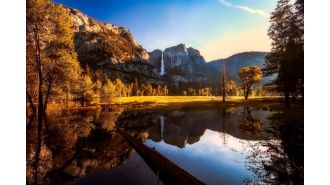We struck gold
Author Steven Johnson shared this anecdote in his newsletter.
“Sometime in the late spring I read H. W. Brands’ epic account of the California Gold Rush, The Age of Gold, published in 2002. I could easily spend the rest of this essay just recounting the greatest hits from it, but there was one mind-bending fact that has stuck with me since I finished the book.
Because the Sierra Nevada—and the Basin and Range Province to the east of them (including Death Valley)—were such inhospitable environments for human passage, news of the discovery of gold in the western foothills of the Sierra reached Australia and China and Chile months before it reached the east coast of the United States.
Without a railroad or a telegraph line to connect the United States from coast to coast, the maximum speed of information was gated by the maximum speed of ships, and sailing from San Francisco to the Atlantic Seaboard took months, if you made it at all. You either had to sail around the horn of South America—one of the deadliest seas in the world—or sail to Panama and then attempt the land crossing of the Panama isthmus, with hopes of connecting with a ship bound for New York or Boston at the other end.
Either way, the information you carried moved at a snail’s pace compared to a Clipper ship riding the Pacific trade winds to Sydney. All of which meant there were Australian and Chinese prospectors arriving in the Sierra foothills before the President of the United States learned that gold had been discovered in California.”
It takes 6 hours to get across from one coast to another now. And the ability to transmit information across coasts – why, even to the rest of the world – is instant.
This was a fascinating reminder of how we take the progress we enjoy for granted.
Progress is often indistinguishable from magic.






